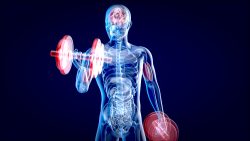Mobile Phone Usage Linked to Hypertension
 Did you know that just 30 minutes of phone use per week could increase your risk of high blood pressure, a leading cause of heart attacks and strokes? Recent research has found that individuals who spend even a short amount of time talking on their phone, even with hands-free devices, may see their risk for hypertension rise by 12%. And if you’re using your phone for more than 6 hours a week, your risk jumps by 25%. These findings may explain why rates of high blood pressure and heart disease have increased by more than double in recent years.
Did you know that just 30 minutes of phone use per week could increase your risk of high blood pressure, a leading cause of heart attacks and strokes? Recent research has found that individuals who spend even a short amount of time talking on their phone, even with hands-free devices, may see their risk for hypertension rise by 12%. And if you’re using your phone for more than 6 hours a week, your risk jumps by 25%. These findings may explain why rates of high blood pressure and heart disease have increased by more than double in recent years.
A team of Chinese researchers analyzed the data from more than 212,000 participants aged 30 and above from the UK Biobank. The results of the study found that regular use of mobile phones for at least 30 minutes per week may increase the risk of their blood pressure increasing. The team monitored the participants for 12 years, and their findings showed that weekly phone usage times of thirty to fifty-nine minutes, 1 to 3 hours, 4 -6 hours, and more than 6 hours were all associated with a higher risk of high blood pressure. In comparison, those who spent fewer than 5 minutes per week receiving and making calls had the lowest risk.
The study focused on a group without a history of hypertension and explored their mobile phone usage through a self-reported touchscreen questionnaire. The team collected information on years of use, hours per week, and use of hands-free devices or speakerphones. Participants who used a mobile phone at least once a week to make or receive calls were labeled as “mobile phone users”, comprising 88% of the group. Factors such as BMI, age, race, sex, family history of hypertension, socioeconomic status, education, smoking habits, blood fats, blood pressure, inflammation, kidney function, blood glucose, and medication use to lower cholesterol or blood glucose levels were also examined.
According to the research, individuals who had a higher genetic risk of hypertension who spend up to 30 minutes per week on mobile phone calls have a 33% higher likelihood of developing the condition. Furthermore, compared with non-users, people that used mobile phones have a 7% higher risk of hypertension, which has also been linked to tumors in the brain. Interestingly, the data suggest that keeping weekly call time to below half an hour may not increase the risk of high blood pressure. These findings are relevant to the almost 75% persons globally over the age of 10 owning a mobile phone. It is significant considering that almost 1.3 billion adults from the age 30-79 currently have high blood pressure, in comparison to less than 600 million 50 years ago.
It is believed that the electromagnetic fields emitted by phones may be the culprits behind this phenomenon. Mobile phones emit low levels of radiofrequency energy that may contribute to temporary hikes in blood pressure. However, past studies on the relationship between mobile phone usage and blood pressure have shown inconsistent findings, likely due to the inclusion of factors such as calls, texts, and gaming.
This study highlights the importance of being mindful of our mobile phone usage and its potential effects on our health. Further studies are required to replicate the findings, however, it is advisable to limit the usage of mobile phones as a precautionary measure to sustain cardiovascular well-being.
To view the original scientific study click below:
Mobile phone calls linked with increased risk of high blood pressure



 Recent findings show that exercise benefits not only the body but also the mind. In fact, a new publication in the journal Neuroscience points out that exercise has an even more profound impact on brain health than previously thought. This research investigates how chemicals produced by muscles during movement lead to neuronal development in the brain, specifically affecting the hippocampus areas responsible for long-term memory storage.
Recent findings show that exercise benefits not only the body but also the mind. In fact, a new publication in the journal Neuroscience points out that exercise has an even more profound impact on brain health than previously thought. This research investigates how chemicals produced by muscles during movement lead to neuronal development in the brain, specifically affecting the hippocampus areas responsible for long-term memory storage.  A newly developed test could shine a light on potential cognitive impairment ahead of any visible symptoms, offering invaluable insight into risk factors for the future.
A newly developed test could shine a light on potential cognitive impairment ahead of any visible symptoms, offering invaluable insight into risk factors for the future. A University of South Australia study has revealed a crucial link between vitamin D deficiencies and brain health- specifically, an increased risk for dementia.
A University of South Australia study has revealed a crucial link between vitamin D deficiencies and brain health- specifically, an increased risk for dementia. Looking for the secret to a healthier life? According to a recent study, it might be time to ditch the city and head to the mountains. Two million people living at elevations over 4,500 meters appear to have lower rates of metabolic diseases like coronary heart disease and diabetes. While daily mountain hikes could certainly contribute to good health, researchers now believe the key is low oxygen levels caused by high elevation living. This animal study could help find new ways to treat metabolic diseases by exploring the connection between oxygen levels and health.
Looking for the secret to a healthier life? According to a recent study, it might be time to ditch the city and head to the mountains. Two million people living at elevations over 4,500 meters appear to have lower rates of metabolic diseases like coronary heart disease and diabetes. While daily mountain hikes could certainly contribute to good health, researchers now believe the key is low oxygen levels caused by high elevation living. This animal study could help find new ways to treat metabolic diseases by exploring the connection between oxygen levels and health. Exercise isn’t just beneficial for your physical health, but it may also be the key to maintaining a healthy gut. A recent study found that exercise duration is an important factor when boosting the microbiome – having more of an impact than intensity alone. According to experts, regularly engaging in longer bouts of activity can provide significant advantages for overall gut well being.
Exercise isn’t just beneficial for your physical health, but it may also be the key to maintaining a healthy gut. A recent study found that exercise duration is an important factor when boosting the microbiome – having more of an impact than intensity alone. According to experts, regularly engaging in longer bouts of activity can provide significant advantages for overall gut well being. A collaborative study revealed a shocking toxicity of FDA-approved artificial sweeteners on digestive gut microbes. At concentrations as low as just one milligram per liter, the bacteria found in the human gastrointestinal tract became toxic. These substances have been previously approved by authorities for consumer use. Six major artificial sweeteners (sucralose, aspartame, saccharine, acesulfame potassium-k, advantame and neotame) specifically raised concern among researchers who conducted this groundbreaking research.
A collaborative study revealed a shocking toxicity of FDA-approved artificial sweeteners on digestive gut microbes. At concentrations as low as just one milligram per liter, the bacteria found in the human gastrointestinal tract became toxic. These substances have been previously approved by authorities for consumer use. Six major artificial sweeteners (sucralose, aspartame, saccharine, acesulfame potassium-k, advantame and neotame) specifically raised concern among researchers who conducted this groundbreaking research. Want to add 16 years to your life? A new study from the University of Leicester says it’s as simple as picking up the pace. Turns out, walking briskly might be the secret to aging gracefully.
Want to add 16 years to your life? A new study from the University of Leicester says it’s as simple as picking up the pace. Turns out, walking briskly might be the secret to aging gracefully. The rapidly increasing preference for fermented products like kombucha and kefir suggest that there is more to the story than merely health-conscientious consumers. Many cultures around the world have historically relied on these foods, suggesting a deeper significance beyond their preservation capabilities. These foods have clearly resonated among modern populations as well. From the traditional Korean Kimchi to Middle Eastern yogurt, nations have been consuming these foodstuffs for centuries. Could it be more than simply a method of preservation? Could it be that fermentation offers much more than just nutrition?
The rapidly increasing preference for fermented products like kombucha and kefir suggest that there is more to the story than merely health-conscientious consumers. Many cultures around the world have historically relied on these foods, suggesting a deeper significance beyond their preservation capabilities. These foods have clearly resonated among modern populations as well. From the traditional Korean Kimchi to Middle Eastern yogurt, nations have been consuming these foodstuffs for centuries. Could it be more than simply a method of preservation? Could it be that fermentation offers much more than just nutrition? A cup of wild blueberries is more than a tasty treat. Researchers have discovered that adding blueberries to your diet can boost brain function and cardiovascular health. According to a new study, blueberries contain a powerful compound called anthocyanins that improve blood flow in both the brain and heart. These polyphenols have been linked to a range of health benefits, and are responsible for the brain-boosting effects of this sweet snack.
A cup of wild blueberries is more than a tasty treat. Researchers have discovered that adding blueberries to your diet can boost brain function and cardiovascular health. According to a new study, blueberries contain a powerful compound called anthocyanins that improve blood flow in both the brain and heart. These polyphenols have been linked to a range of health benefits, and are responsible for the brain-boosting effects of this sweet snack.